DEEP DIVE: DICK ROLLAND & THE TULSA RACE RIOTS — THE BURNING OF BLACK WALL STREET

In 1921, it was common for Black men in Oklahoma to drop out of high school and begin working to earn money for their families. Some of the lowest level roles, such as shoe shiners, gave them the opportunity to receive tips for quality services and help better their situation.
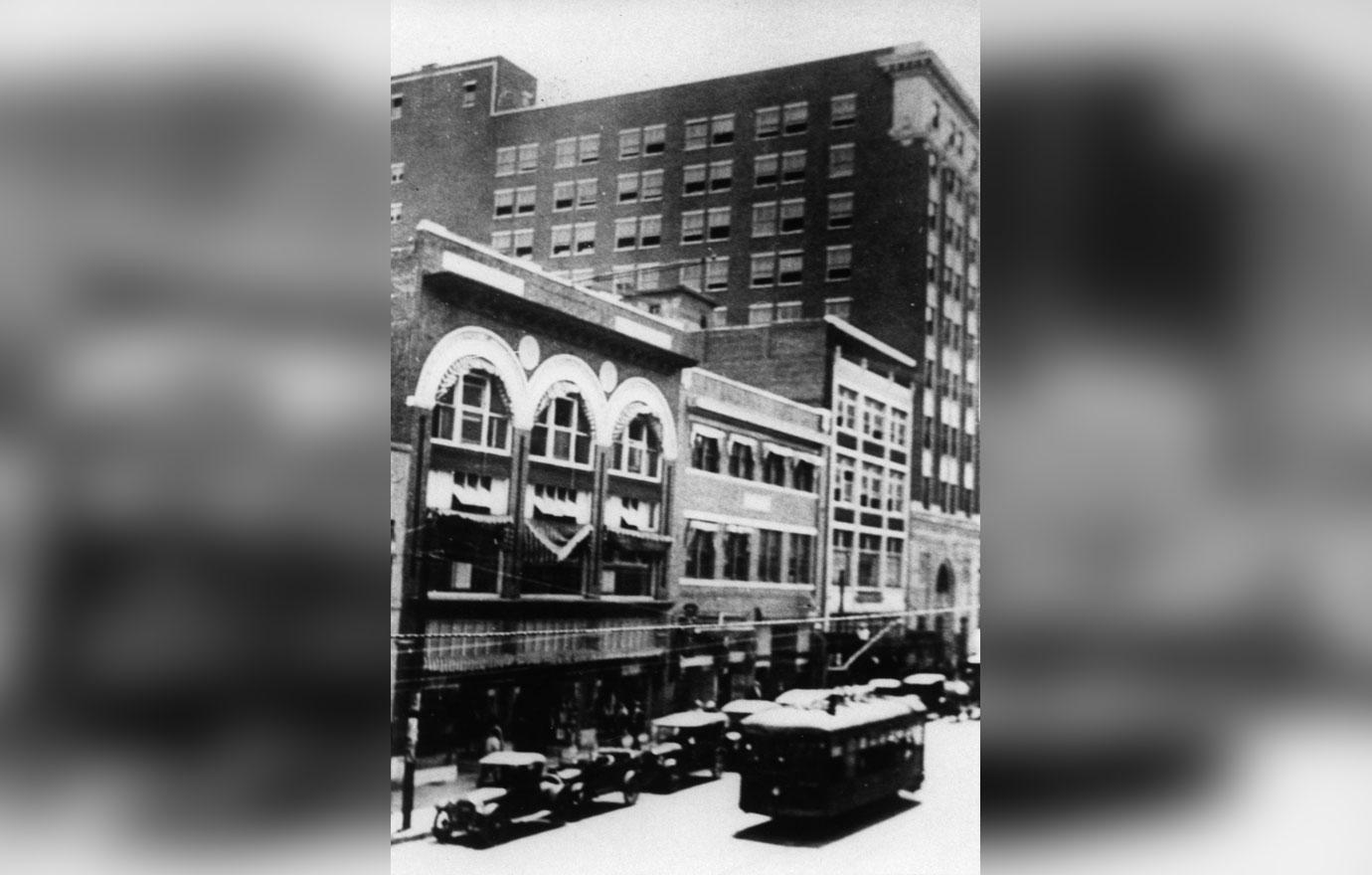
The encounter between Dick Rolland and Sarah Page took place at The Drexel Building in downtown Tulsa, causing racial upheaval throughout the city.
This was the path 19-year-old, Dick Rolland, had chosen. Dick worked in downtown Tulsa, where the economy was booming but conditions for Blacks were still lacking. Black workers had access to one restroom in the area he worked, on the upper floor of the Drexel Building, which was accessible by elevator.
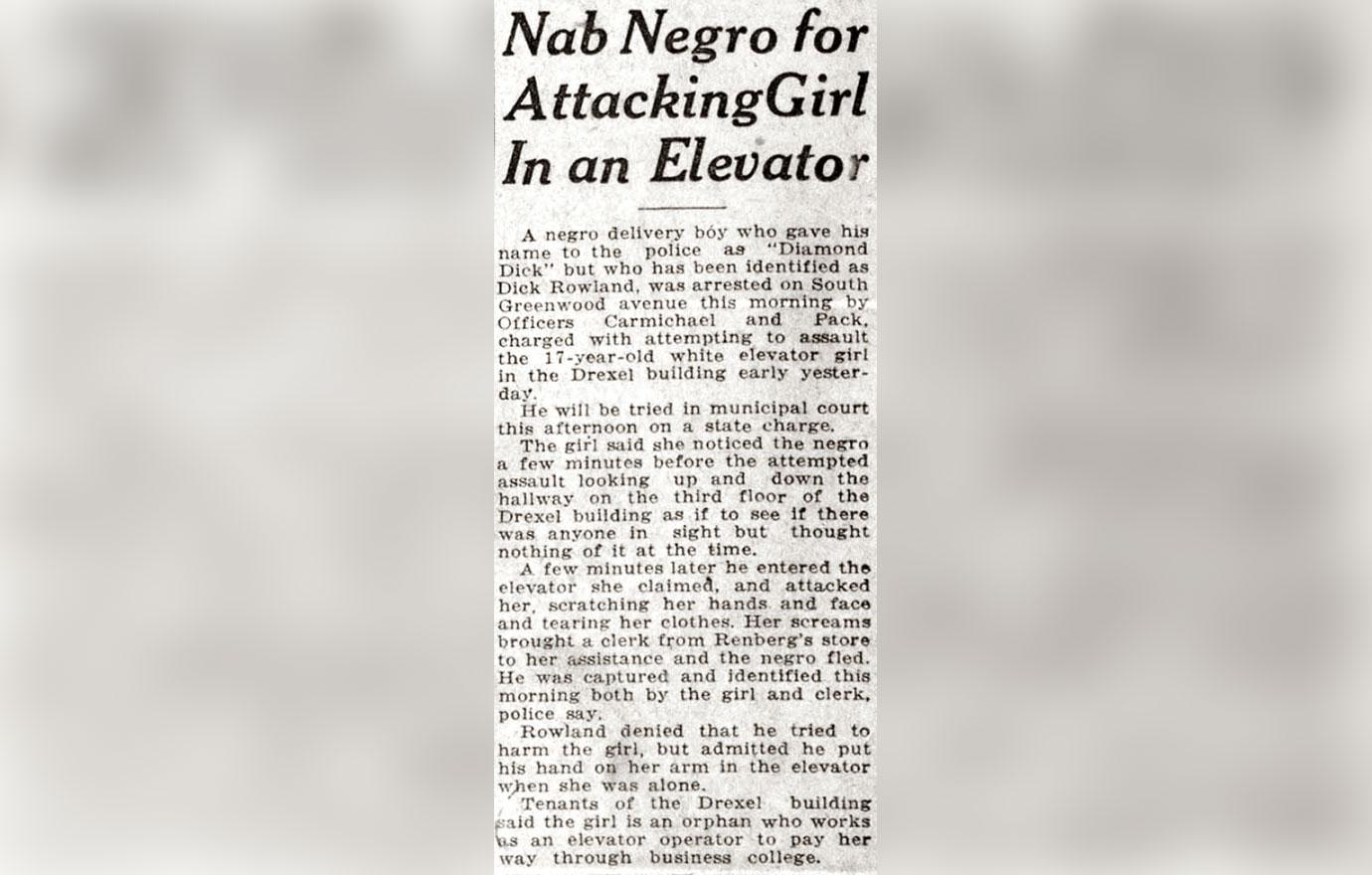
Reports in Tulsa Tribune accused Rolland of attempted assault - but no one knows what really happened.
On the morning of May 30, 1921, Dick made his usual morning stop to the Drexel Building, entered the elevator operated by a young white woman named Sarah Page. To this day, no one knows what happened between the time the doors closed and when they opened, all that is certain is Dick got on the elevator, and when the doors opened, Sarah Page screamed as Dick ran away.
The following day, May 31, 1921, Dick Rolland was arrested and taken to the jail in downtown Tulsa, located on the top floor of the courthouse. At 3:15pm, the Tulsa Tribune published an article with a story that changed Tulsa forever.
The title read, "Nab Negro for Attacking Girl In an Elevator”, and it implied Sarah Page had been assaulted by Dick Rolland. Forty-five minutes later, around 4:00pm, a group of whites had gathered outside the courthouse where Dick Rolland was detained.
By 8:20pm, the group had grown to over 400 whites, and the Tulsa Sheriff ordered the group out of the courthouse and to disburse. When the numbers did not lessen, the Sheriff placed armed guards with and around Dick Rolland to protect him, disabled the elevator, and had armed guards at all stairwells.
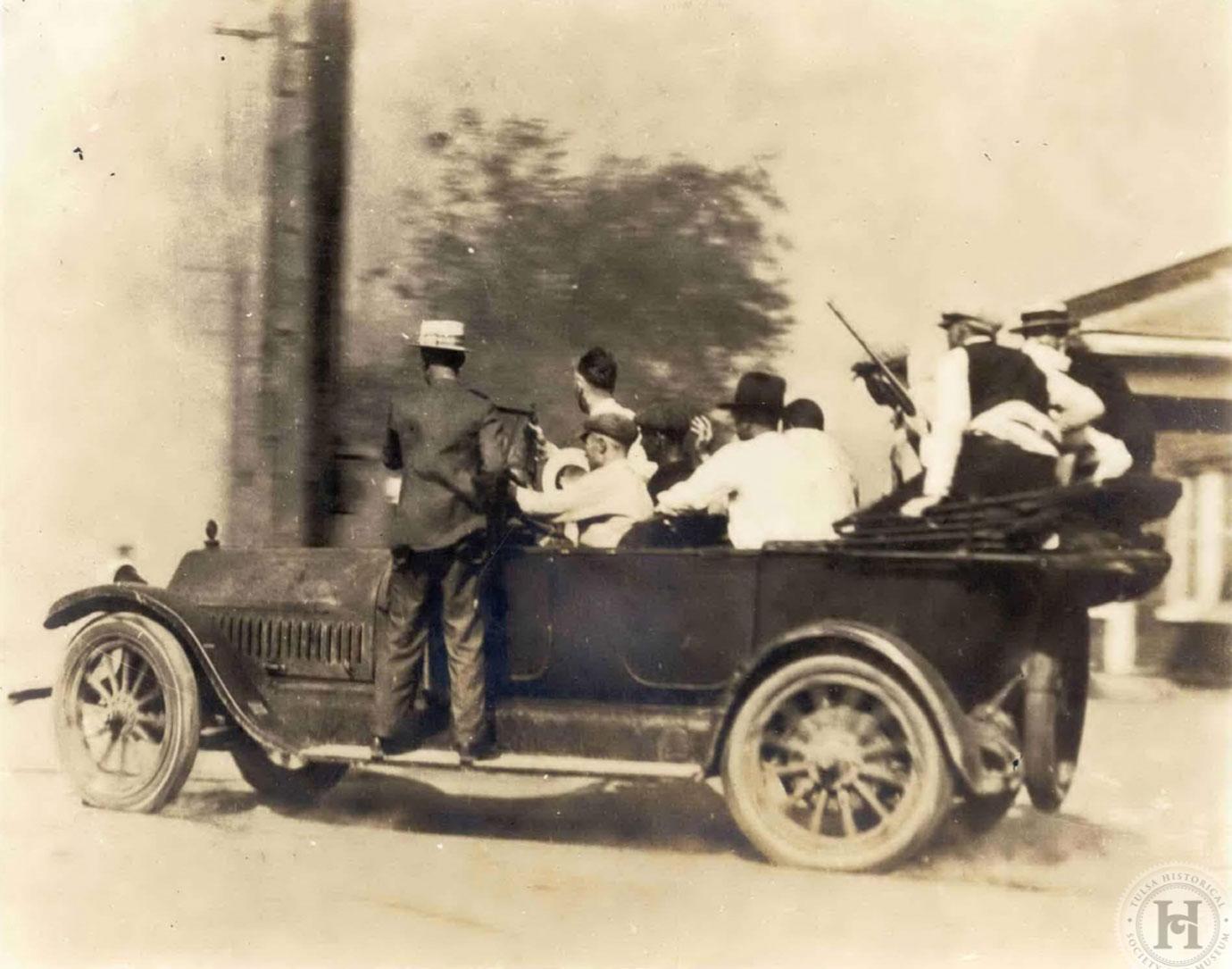
A group of Caucasian men in a car during the 1921 Tulsa Race Massacre, which pitted the city's whites against the Blacks.
It didn’t take long for the majority-Black Greenwood district, popularly known as "Black Wall Street," to catch wind of the white gathering. As word of mouth spread, the situation intensified and implied the whites were storming the courthouse armed to get to Dick Rolland.
Around 9:15pm, a group of armed Black men, some WWI veterans, went to the courthouse to protect Dick Rolland. When they arrived, the sheriff turned them away. He stated he had the situation under control and assured the group that Dick Rolland would be safe. With this news, the Black men returned to Greenwood.
By 10:30pm, the downtown white group had grown to be a mob of over 2000 people. With this large group, the Black men again drove downtown and offered aid to the outnumbered sheriff and his guards. A second time, the sheriff denied needing aid and the Black men decided to go home.
As one of the Black veterans returned to his car, a white man questioned what he was going to do with his gun. The Black man stated he was going to use it if he needed to, and the white man began a physical altercation with the Black man for his gun. During the struggle, a gunshot was fired – a shot that began the Tulsa Massacre.
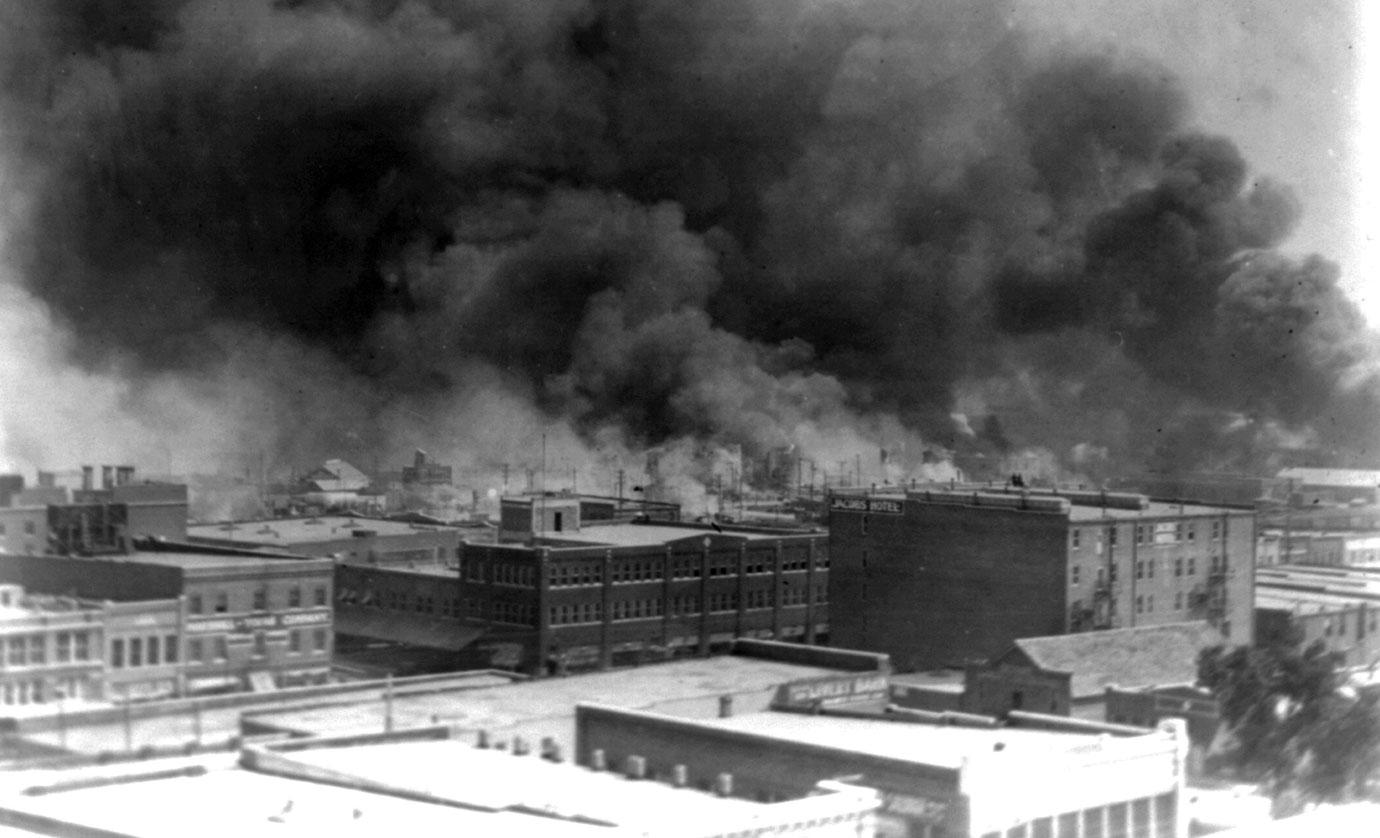
The 1921 race riots in Tulsa, Oklahoma caused over $5 million in damages and left over 300 people dead.
Once that shot went off, the white mob forgot about Dick Rolland, and began focusing their efforts on every Black they came across. Fights broke out all over Tulsa, and began making their way to Greenwood. The Black men and women tried to fight off the mob to save their homes and businesses, but the whites kept coming in large numbers, and were destroying everything they could.
During the white mob attacks, the Tulsa police force sided with the white mob. Police detained every Black they could, and deputized white citizens, encouraging them to detain Blacks as well. The Black men, women, and children were gathered together and taken to detention centers, which left the Black communities defenseless, giving white rioters a path to set fire and destroy everything without protest. Any Blacks who survived and were not detained left everything and fled for safety.
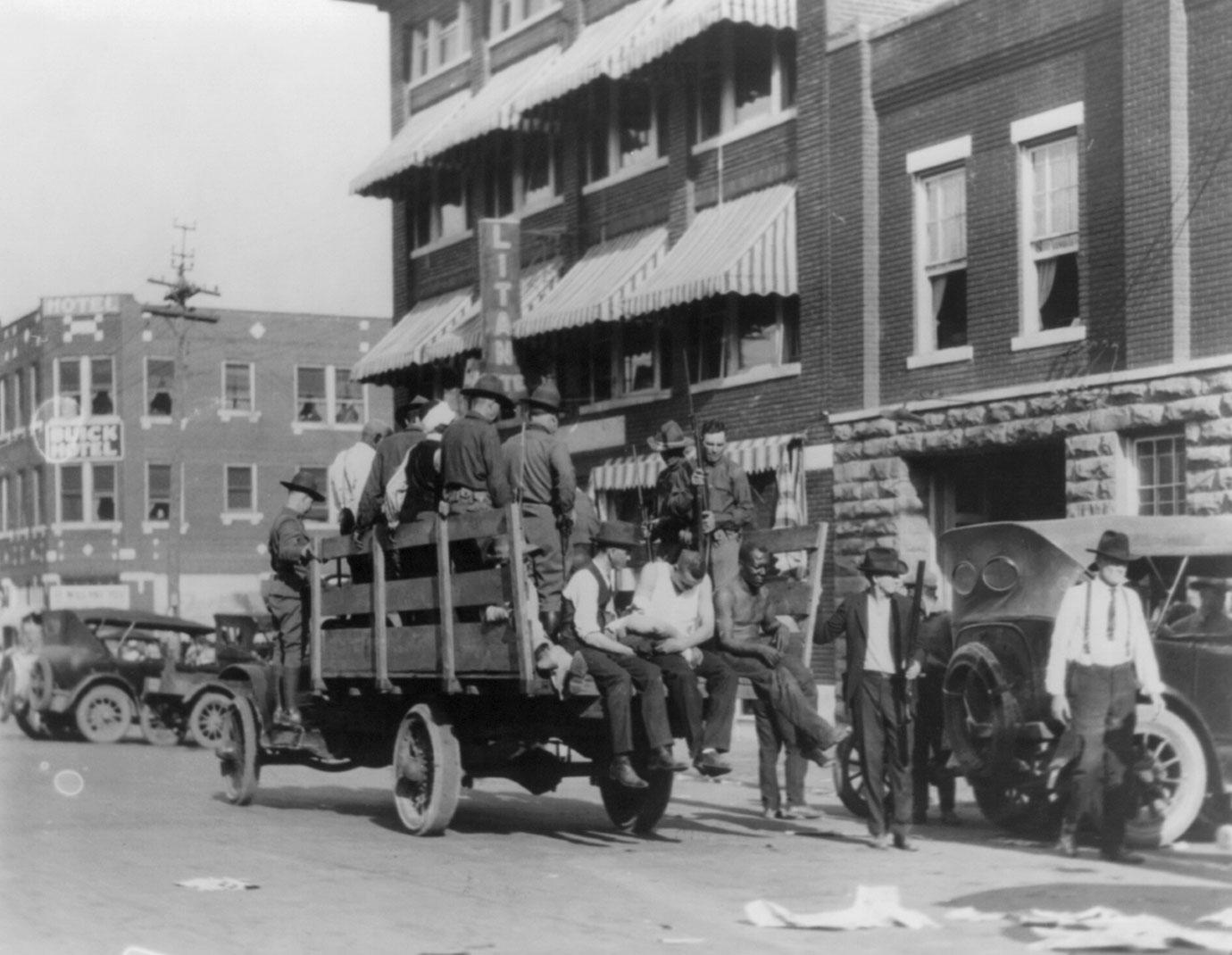
The National Guard was called in to end the violence - but many Black citizens had already lost everything.
The struggle lasted all night and into the morning of June 1, 1921. At 9:15 a.m., 17 hours after the white group began gathering outside the courthouse, martial law was declared and by 11:29 a.m., the National Guard was in Tulsa taking the city back from the rioters.
The National Guard gathered those not already detained and took them to internment centers. The white rioters were disarmed and sent back to their homes. 1000 Black citizens' homes and businesses destroyed, over 300 people dead, over 6000 were in internment centers, and there was an estimated five million dollars in damages.
In the days following the massacre, the economy staggered. Black workers were a vital part of Tulsa’s success, and with them detained for days, the white businesses struggled to cope. Because of this, employers created a system for their Black workers to be released, and upon release, Black employees were ordered to wear a tag signed by their employer.
After their release, Black victims found themselves without shelter, food, or medical care. The Red Cross spent over $100,000 in humanitarian relief efforts to help the Black community get back to work and begin rebuilding their town, providing tents to live in, platforms for tents, food, and medical care.
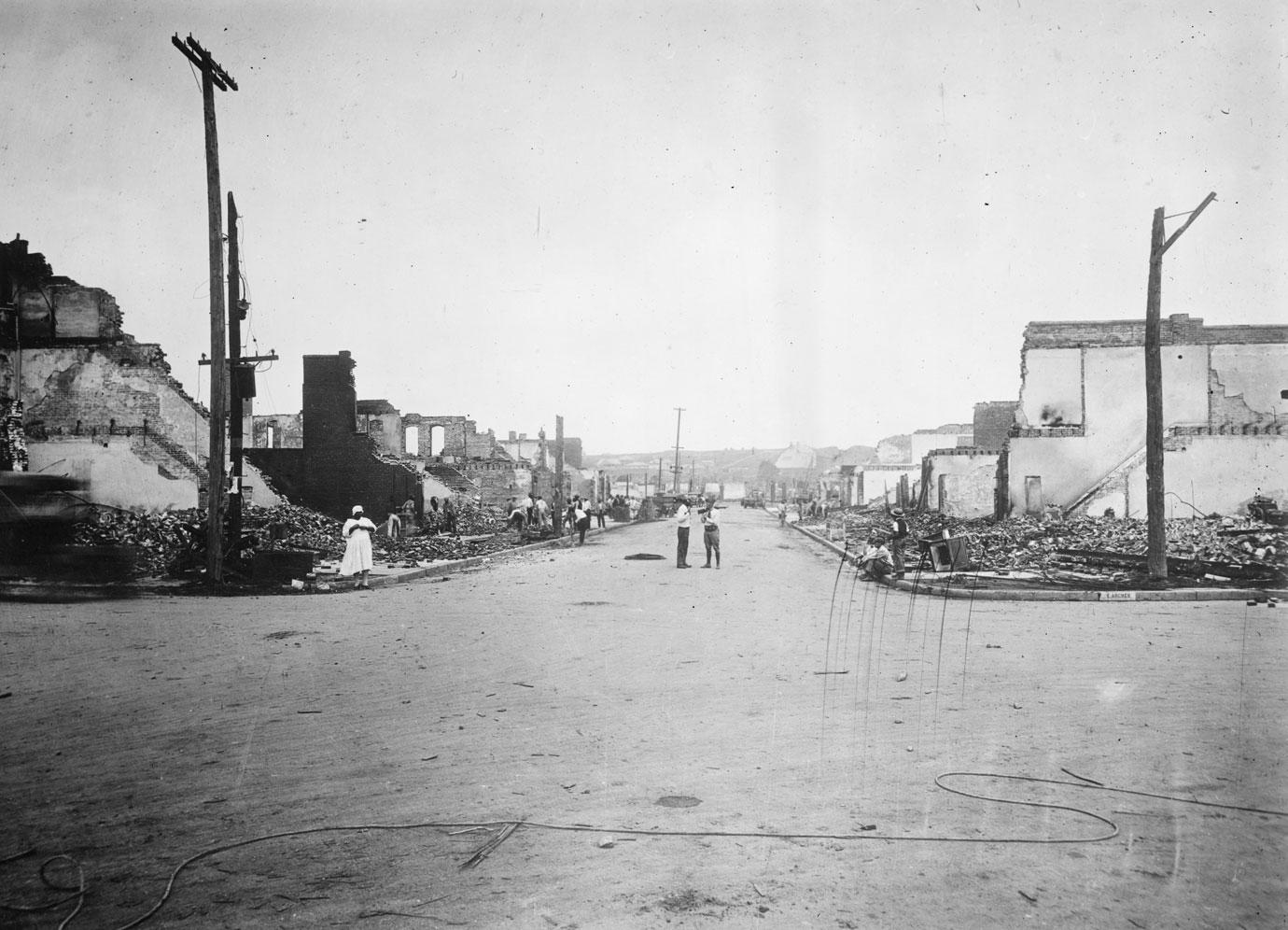
The devastating aftermath of the riots in the predominantly-Black Tulsa neighborhood of Greenwood, Tulsa.
White Tulsa made empty promises. They created a reconstruction committee to help Greenwood rebuild. Instead, the committee created new costly construction requirements and proposed an industrial park be built instead.
Black attorney Buck C. Franklin was among the displaced workers impacted by the white rioters. He and his partners worked out of a tent after his office was burned, and they created a strong stance against this committee and the new rules in place. The Oklahoma Supreme Court sided with Franklin, and struck down the ordinance, but the feeling of justice was short-lived. A state grand jury was called after the ordinance was removed, and were tasked with investigating and charging those responsible for the riot.
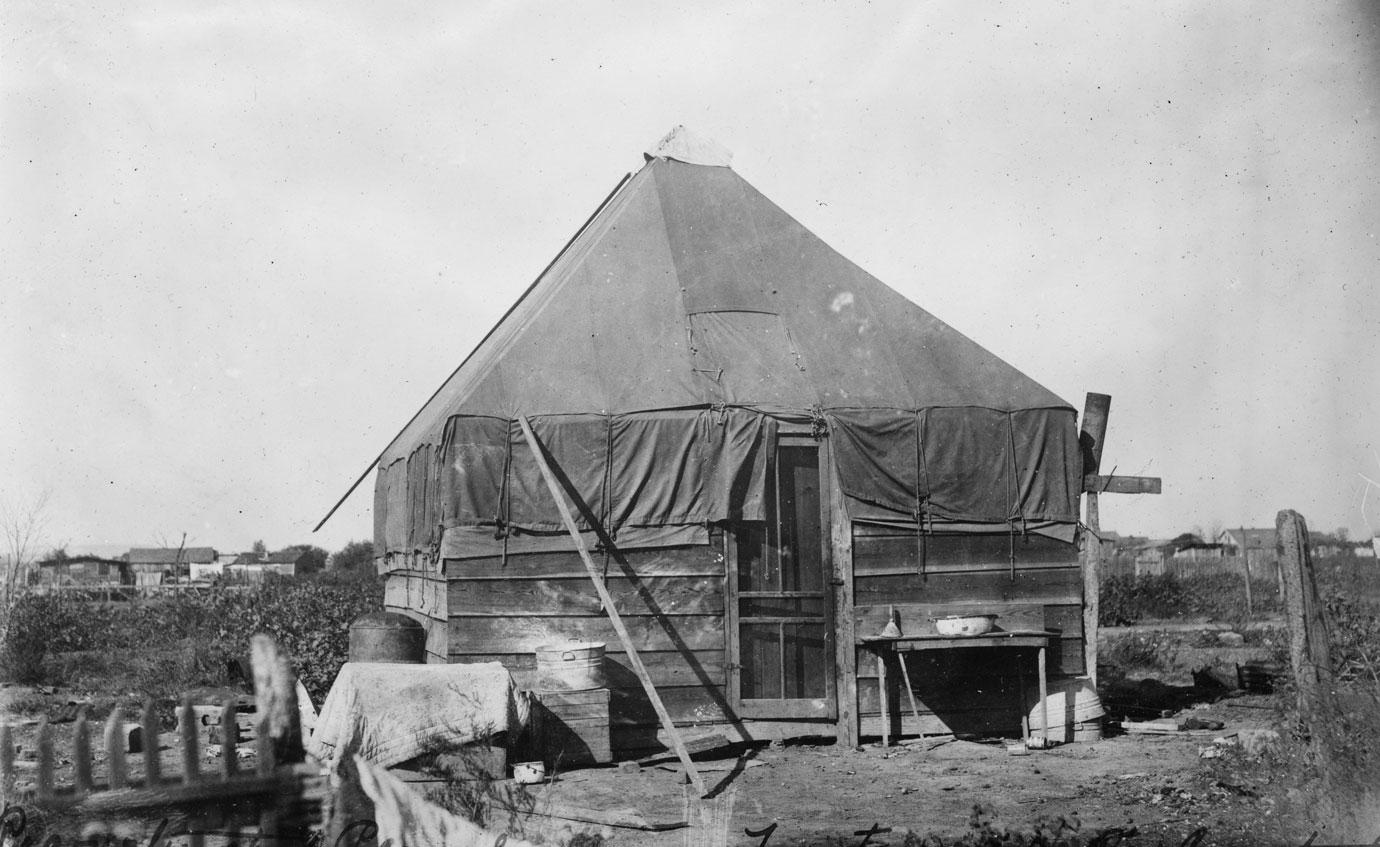
Red Cross tents set up after the carnage in Tulsa.
The outcome of their investigation was published in the newspaper, an article titled, “Black Agitators Blamed for Riot”.
Some Black families chose to leave Tulsa after this massacre, getting one way train tickets to never return. Among those who fled was Dick Rolland. After the riot was over, Sarah Page refused to testify against Dick Rolland, his case was exonerated, and he was free.
The larger majority of the Black community was relentless, rebuilding the moment they were able. Creating new homes, businesses, and churches was the top priority in Greenwood, and they would be successful. The city became bigger and better than before, and saw much more economic prosperity throughout the 1930s, and 1940s.
Become a Front Page Detective
Sign up to receive breaking
Front Page Detectives
news and exclusive investigations.
